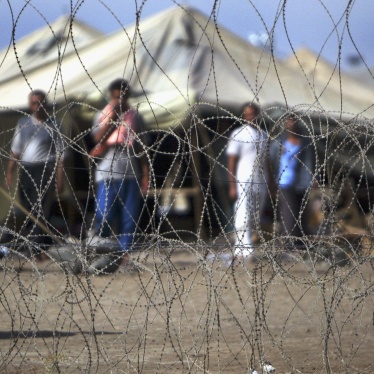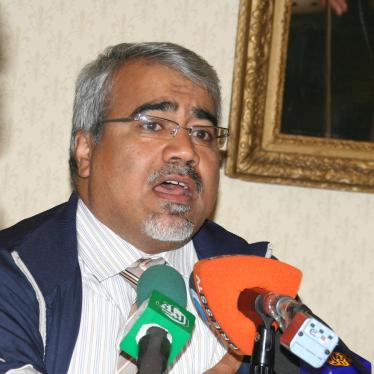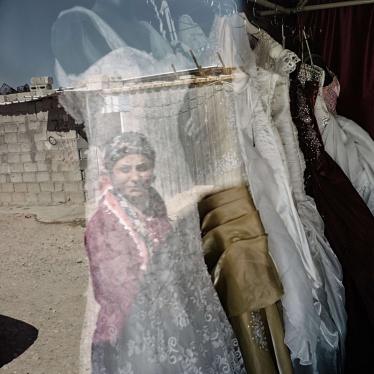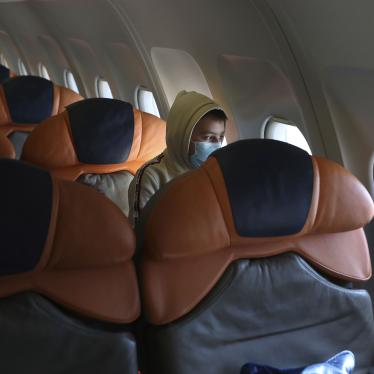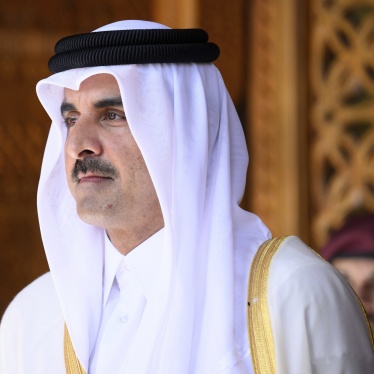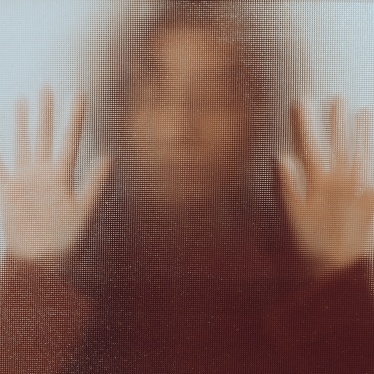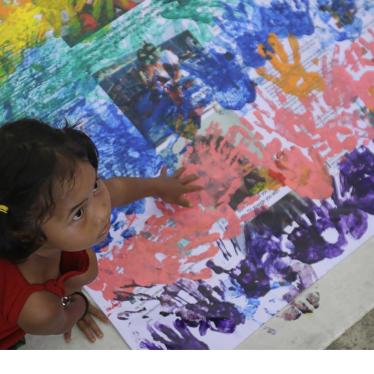(New York) – Syrian army and security officers have detained and tortured children with impunity during the past year, Human Rights Watch said today. Human Rights Watch has documented at least 12 cases of children detained under inhumane conditions and tortured, as well as children shot while in their homes or on the street. Human Rights Watch has also documented government use of schools as detention centers, military bases or barracks, and sniper posts, as well as the arrest of children from schools.
Human Rights Watch urged the United Nations Security Council to demand that the Syrian government end all human rights violations and cooperate with the commission of inquiry dispatched by the UN Human Rights Council and the Arab League observer mission. The government should stop deploying security forces in schools and hospitals, Human Rights Watch said.
“Children have not been spared the horror of Syria’s crackdown,” said Lois Whitman, children’s rights director at Human Rights Watch. “Syrian security forces have killed, arrested, and tortured children in their homes, their schools, or on the streets. In many cases, security forces have targeted children just as they have targeted adults.”
Human Rights Watch has documented widespread government violence against peaceful demonstrators, systematic killings, beatings, torture using electroshock devices, and detention of people seeking medical care.
Widespread Arbitrary Detention and Torture of Children
Human Rights Watch has interviewed more than 100 individuals detained by Syrian security forces in cities across Syria since protests began in March 2011, including several children and a number of adults who encountered children while in custody. Interviewees described rampant use of torture in detention centers against even the youngest detainees, even beyond the 12 cases specifically documented by Human Rights Watch.
Interviews with defecting army officers also corroborate accounts by detainees. An army officer who had been deployed in Douma as part of the 106th Brigade, Presidential Guard,and another deployed in Talbiseh with the 134th Brigade, 18th Division,told Human Rights Watch that they had orders to arrest any male over the age of 14 or 15 in large-scale raids.
Some of the arrests took place in schools. “Nazih” (not her real name), a 17-year-old girl from Tal Kalakh, told Human Rights Watch that in May 2011, security forces entered her school and arrested all the boys in her class, after questioning them about the anti-regime slogans painted on the school walls.
“About four [officers] jumped over the walls, and the rest came through the main gate. They hit [the boys] with their hands and cursed them. I left school three days after that. I don’t know if [the boys] ever came back,” she said.
Her brother “Ri’ad” also said that armed men visited his school and questioned students. Their father told Human Rights Watch that he stopped his children from attending school after these incidents.
“We heard of kids younger than Ri’ad being taken,” he said. “We know there’s no big difference [to the security forces] between a child and an adult.”
Children, some as young as 13, reported to Human Rights Watch that officers kept them in solitary confinement, severely beat and electrocuted them, burned them with cigarettes, and left them to dangle from metal handcuffs for hours at a time, centimeters above the floor. Detention facilities where children reported being tortured include: the military security detention center in Homs, the military security detention center in Tartous, the Balooneh detention center in Homs, the Palestine detention center in Damascus, and the 291 detention center in Damascus. All children interviewed said that they received inadequate food and water in detention, and most received no medical treatment for torture-inflicted injuries.
“Ala’a,” a 16-year-old boy from Tal Kalakh, told Human Rights Watch that Syrian security forces detained him for eight months, starting in May 2011, after he participated in and read political poetry at demonstrations. He was released in late January 2012 after his father bribed a prison guard with 25,000 Syrian pounds (US$436). During his detention he was held in seven different detention centers, as well as the Homs Central Prison. Ala’a told Human Rights Watch that at the Military Security branch in Homs:
The parents of “Fouad,” a 13-year-old from Latakia, told Human Rights Watch that in December military security officers arrested him and held him for nine days. According to his parents, he was accused of burning photos of Syrian President Bashar al-Assad, vandalizing security forces’ cars, and inciting other children to protest. Security officers burned Fouad with cigarettes on his neck and hands, they said, and threw boiling water on his body. He spent three days in solitary confinement, according to his parents.
“Hossam,” age 13, told Human Rights Watch that security forces detained him and a relative, also 13, in May 2011 and tortured him for three days at a military security branch about 45 minutes by car from Tal Kalakh:
Article 37 of the Convention on the Rights of the Child (CRC) states that: “No child shall be subjected to torture or other cruel, inhuman or degrading treatment or punishment,” and that “No child shall be deprived of his or her liberty unlawfully or arbitrarily. The arrest, detention or imprisonment of a child … shall be used only as a measure of last resort and for the shortest appropriate period of time.” Syria ratified the Convention on the Rights of the Child in 1993.
Children in Solitary Confinement and Inhumane Detention Conditions
Four children interviewed by Human Rights Watch said that they were detained in solitary cells, sometimes with no light or windows, sometimes for several days. “Ahmed,” age 16, spent a total of 10 days in solitary confinement in the Tartous military security detention center:
“Confinement in a dark, cramped space with no human contact but for prison guards can break a grown man,” said Whitman. “Children should never face the horrors of solitary confinement.”
Children also told Human Rights Watch that security forces kept them in overcrowded group cells, deprived of food and water. Hossam said he received only one meal a day, consisting of a spoiled potato and a piece of bread. Ala’a said:
“For three months, my family didn’t know anything about where I was. They heard that I had died and that my throat had been pulled out,” Ala’a, 16, told Human Rights Watch.
His mother learned Ala’a was still alive after he bribed a guard to let him use a mobile phone and called her. He said he spoke to her only twice during eight months in detention. Article 37 of the CRC also provides that any child detainee “shall have the right to maintain contact with his or her family through correspondence and visits, save in exceptional circumstances.”
Children Shot in Their Homes
Syrian activists have reported dozens of cases in which children have been killed by sniper fire or shelling from government security forces in residential areas. In interviews with Human Rights Watch, army defectors confirmed that they fired arbitrarily in residential areas in some cases.
“Mohammed,” a doctor treating Syrians in Lebanon who were injured in Syria, told Human Rights Watch in January that he had treated 24 Syrian children in the last two months, and that the majority of them were injured by bullets, some in their homes.
Human Rights Watch interviewed two children who said they were shot while inside their homes in Quseir. “Youssef,” age 11, told Human Rights Watch that he was a student until the fall of 2011 when schools closed because of the violence, and that after that he started work in a shop as a car washer. He described being shot in the back at his home in late January:
Military Use of Schools, Hospitals
The government has used schools as detention centers, sniper posts, and military bases or barracks. “Marwan,” from the Insha’at neighborhood in Homs, and other Homs residents told Human Rights Watch that the army attacked Bahithet Al-Badiyah school on Brazil Street on November 4, and that military security forces then turned the school into a detention center. Local activists also told Human Rights Watch that military security turned Al-Ba’ath elementary school in Joubar, another Homs neighborhood, into a military base and detention center in late December.
One Hama resident interviewed by Human Rights Watch in late January said that he saw snipers shooting from the roof of the local children’s hospital and that soldiers were using part of the hospital as an army barracks.
“Part of it remains open as a hospital, but it’s hard for us to go there,” he said. “If you go to the hospital, they search you and check your ID. People are afraid [of the security forces] and then there are the snipers – [they] are shooting people in the street.”
Human Rights Watch also viewed a video that showed a sniper posted on a school rooftop in the Qusoor neighborhood of Hama and spoke with the activist who said he filmed the incident in September 2011.
Children also told Human Rights Watch that their schools closed in 2011 due to violence, or that it was no longer safe for them to go to school. “Mohammed,” a 10-year-old boy from Homs, said, “I went to school for only one day [this year]. The teachers just gave us the books and told us not to come back. The road to school was not safe because of snipers.”
“Ahmed,” 17, from Baniyas, said, “I went to school for 15 days before I stopped, because it was dangerous. There was a curfew, so I couldn’t leave the house, not even during the day.” Marwan told Human Rights Watch that he stopped letting his 10-year-old son go to school because of snipers targeting Brazil Street, the main road leading to the school.
“We called it ‘the street of death’,” he said.
“Schools across Syria are closed because it’s too dangerous for students to attend, or because the military thinks schools are better used as detention centers than educational establishments,” said Whitman. “How long will Syrian children pay the price for the violence around them?”
